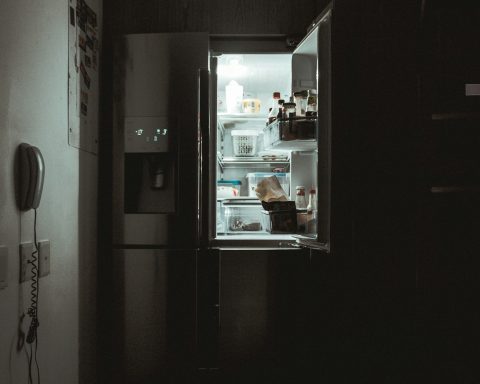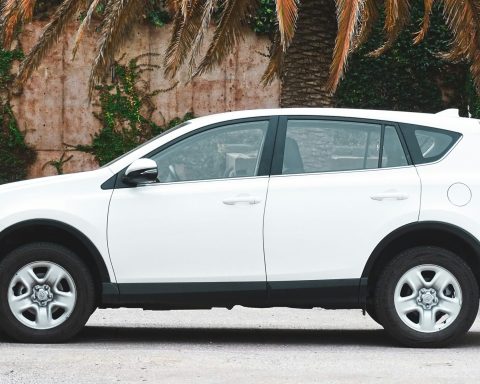 Peter McNelly is a mental health nurse with over 50 years experience working in the field of mental health in England, New Zealand, Australia and Northern Ireland.
Peter McNelly is a mental health nurse with over 50 years experience working in the field of mental health in England, New Zealand, Australia and Northern Ireland.
The drive to have other health professionals working with GPs in their practices in Northern Ireland arose as a result of both the Bengoa Report1 and the Health and Wellbeing – Delivering Together Report,2 together with the ever growing workload demands faced by GPs.3 The development of multi-disciplinary teams (MDTs)4 working as part of the primary care team alongside GPs is both new and untested anywhere in the UK.
GP Federations have been established in Northern Ireland5 with two main aims:
- To support and protect GP Practices.
- To help deliver the transformation agenda in Health and Social Care.
The creation of the federation model has been led and funded by GPs themselves. There are currently 17 fully incorporated GP Federations covering all areas of Northern Ireland, all of which are owned entirely by GPs.
The creation of the [Northern Irish] federation model has been led and funded by GPs themselves.
GPs remain the primarily responsible medical officer for patients, while MDT professionals play an important complementary role in assisting GPs with their work. Without such an agreement and cooperation, MDT professionals would be unable to work in GP Practices.
Context
In the last five years the number of GPs in Northern Ireland has remained unchanged, despite the workload and patient expectations. The prevalence of poor mental health and social deprivation in Northern Ireland has been well documented, indicating 25% higher increase than other parts of the UK.
MDTs6 seek to address any issues that patients face at an early opportunity, providing access to a range of experts who can provide care, advice and support to GP Practice patients. The MDTs consist of a Social Worker (SW), Social Worker Assistants (SWA), Mental Health Practitioner (MHP), Pharmacists and Physiotherapists. Part of the MDT’s role is to provide timely and appropriate first contract of patients, freeing up GP appointment slots and assisting with GP workload pressures. The General Medical Services (GMS) Contract requires that the GP must see or contact a registered practice patient if the patient so requests, therefore MDT professionals may still not necessarily be the first contact for a patient even if that would have been more appropriate.
The MDTs consist of a Social Worker, Social Worker Assistants, Mental Health Practitioner, Pharmacists and Physiotherapists.
An enormous culture shift is required for an MDT Professional working in an NHS Trust who wishes to transfer to work for a GP Federation. GP Practices are small businesses. Whilst the majority of GP practices operate as registered members of their local GP federation there is little or no uniformity in their approach to service delivery, administration processes or practice structure. This is often in stark contrast to the experience of the MDT professional who may have traditionally worked in quite structured programs of care, with uniformed governance standard and approach to service delivery.
SWs and SWAs are currently still employed by the Trusts and not the GP federations, and in some Federations in Northern Ireland the Physiotherapists are still also employed by the Trust, but as members of the MDTs they do work in the various GP Practices within the GP Federations. At times such arrangements appear to add to role confusion. It is essential that all parties involved in the development of GP Federations and MDTs have a clear understanding of the core fundamentals of how MDTs in GP Practice will work in the real world.
MDT members need to be aware that each GP is unique and clinically autonomous, especially in their decision-making. The role and function of a MHP is illustrated by some GPs referring to the MHP as being a CPN, a Counsellor, and/or Therapist, perhaps indicating that the role and function of a MHP in any given surgery remains ambiguous.7 The patients seen by the MHP usually fall within the remit of Common mental health problems, and are Step 1 and 2 in need, as per NICE guidelines.8
It is important that MDT members such as the MHP and physiotherapists do not create caseloads of their own by default, as they can be required to see any of the patients registered with the practice. Given that there are usually many thousands of patients, then just like the GPs these MDT professionals must be available to contact all patients within a reasonable time frame.
The lack of medical personnel in Northern Ireland’s Trusts is also a concern.
In this context, time management becomes an important issue. How many times a MDT professional must attempt to contact a patient without any response can become debatable. GPs are seeking 15 minute routine appointment slots.9 It is not uncommon for GPs, if they are aware beforehand that the appointment is for mental health, to book a double slot i.e. 20 minutes for the appointment, reflecting GPs’ experience that the patient with mental health concerns generally requires more time for the consultation than those with physical health concerns.
The continued workload for GPs is also reflected in did not attend (DNA) rates. In primary care the percentage of DNAs is small in comparison to the rates of DNAs in NHS Trusts, thereby adding to the continued flow of demand on the GP, MHP and physiotherapist time each and every day. The use of Thebigword translation services provider and face to face interpreters is another workload consideration for GPs and members of the MDT.
The lack of medical personnel in Northern Ireland’s Trusts is also a concern, and particularly in trusts’ adult and children mental health teams. With the acceptance criteria bar moving forever upwards for a GP referral to be accepted, with GPs then being required to manage patients who in the past would have at least been seen as an Out Patient, many of whom would have had ongoing input and therapeutic support from the various mental health teams. The revolving door phenomenon appears to have resurfaced, and been moved from trust mental health teams to GPs in primary care.
The revolving door phenomenon appears to have resurfaced, and been moved from trust mental health teams to GPs in primary care.
Another practice recorded a 90/10 split, with most appointment slots for the MHP being filled by reception staff after triaging patient calls, and the other 10% by GPs and occasionally by other MDT colleagues. First contact and reduced GP workload objectives were better achieved by the practice with the 90/10 split.
The function and role of the MHP is brought into focus with the disparity between practices, and how Practices and GPs use the MHP resource. It might suit some practices to use the MHP in a manner that does not aim at first contact or reduced workload objectives, but such a consideration with its inherent flaw of a caseload, should be discussed and agreed by all parties in the first instance.
My personal experience of working in two of the five GP Federations in Northern Ireland suggests that the level of staff burnout is already high, especially with MHPs. GPs themselves look for a little variety and less isolation in their day to day work within the practice, so a balance that is cost effective will also be required for the MDT Professionals working alongside their GP colleagues in order to help avoid isolation and burn out.
My personal experience …. suggests that the level of staff burnout is already high.
MDT professionals working in GP Practices are managed by a Team Leader, one for each of the professional disciplines in the MDT, and staff receive professional supervision according to their profession. However when working in GP Practices the day to day, week to week management issues for some MDT members such as the MHP, some Physiotherapists and Pharmacists are undertaken by the PM.
Tasks and duties are also frequently delegated by the various GPs within a practice, and this again brings into focus the role and function of a MHP in Practice. This makes any similarity of how the MHP should practice virtually impossible, given the many different opinions on these issues.
The involvement of MDT members in Quality and Outcome Framework Targets (QOF) needs exploration, as GPs and PMs have a view on the involvement or otherwise of MDT Professionals in QOF, as do the MDT Professionals themselves.
The professional backgrounds MHPs are recruited from appears to be a significant factor in the way they practice.10 Unlike GPs who have a medical background and training to provide care from cradle to the grave, MHPs in GP Federations in Northern Ireland may come from a background of Social Work, Mental Health Nursing, Occupational Therapy or Psychology. Such diverse professional training, coupled with an individual’s experience in the field of mental health, fosters wide-ranging differences in how each MHP sees their role and how they practice.
Such diverse professional training …. fosters wide-ranging differences in how each MHP sees their role and how they practice.
Agreement in principle of the exact role and function that MDT professionals are to play in GP Practices should be agreed by all parties beforehand, but also with acknowledgement that as with most new systems some changes may be required on review. However the role and function of the Physiotherapists needs much less clarification than those of some other MDT members.
The inclusion of some of these MDT professional groups working in the primary care setting within Northern Ireland is likely to be assessed by individual GPs and PMs as being less helpful in meeting their perceived needs.11 A broadly similar endeavour with primary care networks (PCNs) in England has many of the same issues.12 The objectives and functions of MDTs being attached to GPs should become clearer by reviewing current experience and knowledge of GPs and MDT professionals who are working with this new model in Northern Ireland.
Again, anecdotally, the outcomes for many patients as a result of the input from MDT professionals has been very positive, and has gone some way to reduce the duration of patients’ ongoing physical, mental and social difficulties.
Recommendations
My experience suggests that the deployment of MHPs and physiotherapists as members of multidisciplinary teams working in GP practices in Northern Ireland can reduce GP’s workloads. This is demonstrated by the number of appointment slots such professionals can free up by being the first contact for patients. This view is supported by GPs themselves.
The deployment of MHPs and physiotherapists as members of multidisciplinary teams working in GP practices in Northern Ireland can reduce GP’s workloads.
All MDT members require adequate recognition and support to address the issues of personal and professional isolation, inclusiveness, deskilling and burnout. To this working in one GP Practice only would both aid inclusiveness, and is a better use of the current limited MDT staff resource.
A fundamental review of the MDT’s role, especially that of the MHP, should be undertaken before new GP Federations become live in Northern Ireland. Full time allocation of each MDT professional per 10,000 practice patients must also be looked into.
References
- Systems, Not Structures-Changing Health and Social Care. Bengoa Report, 2016.
- Department of Health. Health and Wellbeing 2026 – Delivering Together. 2017
- Department of Health. Review of GP-Led Primary Care Services in Norther Ireland. March 2016
- Department of Health. Regional Launch of Primary Care Multi-Disciplinary Team.
- Health and Social Care Board. GP Federations 2016
- Royal College of General Practitioner’s. Multi-disciplinary teams. An expanded team. 2019.
- Kilmartin S. How our mental health nurse reduced GP workload and cut prescription costs. Pulse Journal October 2018
- Common mental health problems: identification and pathways to care. NICE Clinical guideline, May 2011
- M.Thompson-F.Walter. Increases in general practice workload in England. The Lancet, April 2016
- Kamal Sidhu. Hiring a mental health practitioner. Pulse Journal. 2021
- Pulse PCN roundtable: The Additional Roles Reimbursement Scheme. Pulse Journal 30 September 2021.
- Primary care networks two years on. PCN Network NHS Confederation, August 2021
Featured image by Takahiro Sakamoto at Unsplash







Peter McNelly is a registered Mental Health Nurse and is working as a Mental Health Practitioner for a GP Federation in Northern Ireland.
I am a mental health nurse and employed by one of the GP Federations in Northern Ireland as a mental health practitioner (MHP); other professionals may also be employed in this role such as social worker, occupational therapist, or psychologist. I have now worked with 12 different GPs in four different practices, and with two different GP Federations in Northern Ireland in the last 3 years.
Northern Ireland’s GP Federations have some similarities to primary care networks (PCNs) with the Additional Roles Reimbursement Scheme that operates in England. Recently, PCNs in England have been able to employ additional adult MHPs due to demand.1
The availability of an MHP for each practice appears to be based on practice size: the larger practices will have an MHP available for 4–5 days each week; medium size will be 2–3 days; and small size 2 days a week. The ratio appears to be 1000 patients for one MHP session (half day), and like most MHPs, I work across more than one practice each week — my own experience would suggest this ratio does not reflect need.
How each MHP practises may be influenced by various factors, which include the practise of individual GPs and how they see the role of the MHP; larger practices may view a mainly first contact role for the MHP as being important due to high daily demand on GP appointments.
On the other hand, smaller practices may operate in a different manner, often due to the reduced availability of an MHP, and may prefer to have the MHP contact patients with mental health issues that have already been identified by the GP.
Another influence on practise is the professional background of the MHP, for example, nurse or social worker. My own practise has reflected some of the above, as I have practised and worked in a different way with all four practices.
I do not provide therapy, counselling, or cognitive behavioural therapy. If I did I would quickly build up a caseload for myself and be unavailable to the GPs to see patients they would want me to see. The only reason I may not meet such requests would be my time availability to the practice, and not because I had created a caseload.
My practise
Regardless of the practice size and model employed to make best use of an MHP, there are some core fundamental methods of working and practise I employ given that in most instances I have no prior knowledge of the patient I am about to contact; for example, if the contact is either on the telephone or in-person I will read any information before hand on the referral, which may be from the GP, receptionist, or occasionally other members of the practice multidisciplinary team.2
In some practices I have a list of patients to contact and in others I have appointment slots allocated for the day, with patients being booked into these. Some will be first contact appointments3 and others will be at the request of a GP. With a booked appointment system I feel eight appointments or less a day should be the norm.
Once I have obtained information on why a patient has been referred, I then look at the patient’s electronic GP record and read history, summary, consultations, medication, problems, and any documents/letters regarding mental health before contacting the patient.
With each contact/consult I will confirm that I am speaking to the right patient (if they are driving I will ask them to pull over or will ring them back), and introduce myself clearly, pointing out I am neither a GP nor doctor, but an MHP working alongside the GPs.
I will ask about alcohol/drug use, physical health issues, suicidal ideation, medication compliance, social circumstances, work, relationship status, whether they have children, and any current support, unless that information has been noted by the GP already.
I also frequently ask if they are doing anything to maintain physical and mental wellbeing. I allow for ventilation, and I make a written note of salient points during each consult. I use this method of practise rather than attempt to enter information directly into the patient’s electronic record, as I find in the consult, either face-to-face or via telephone, it allows me a more focused intervention and ventilation with the patient.
With first contact/consults some patients clearly have a view on what they are seeking, for example, medication or counselling. Others are less clear in how they might be helped, and some remind me I am the expert and that is why they have consulted me.
With most contacts I will normally have arrived at a formulation of what the issues and concerns are that need to be addressed towards the end of the consult, and will seek in partnership agreement with the patient on these.
Occasionally with someone I consult on the phone I may be unable to identify the issues and concerns, and will invite the person in for a face-to-face consult. Examples of issues and concerns are shown in Table 1.*
Table 1. Reported issues/concerns at first contact with patients over a 3-month period
Reported issues/concerns
n
Depression/low mood
73
Anxiety
69
OCD
12
PTSD
24
Stress
38
Social impacting on mental health
34
Physical impacting on mental health
27
Mixed anxiety/depression
23
ADHD
10
Postnatal depression
11
COVID-19 related
9
Relationship problems
8
Bereavement
24
Alcohol/drug misuse
34
Other
16
ADHD = attention deficit hyperactivity disorder. OCD = obsessive compulsive disorder. PTSD = post-traumatic stress disorder.
Consults may still take up to an hour even when a patient has already had contact with a GP or information that aids my practise has been recorded. This is because I may need to refer on, contact a GP or other MDT members, use an interpreter, or sometimes speak to relatives to complete the contact/consult.
The time spent with an individual patient is sometimes reflected in the type of referral, and first contact referrals with booked appointment slots usually take 30 minutes. Table 2 shows the booking pathway primarily for the first contact model.
Table 2. Breakdown of referrals over a 3-month period for first contact model
Category
n
Practice patients referred to MHP during 3-month period
374
Patients assessed/consulted
316
Did not attend
58
Referred by GP
124
Referred by reception
224
Referred by other, for example, MDT or practice nurse
26
MDT = multidisciplinary team. MHP = mental health practitioner.
As in keeping with most GP practices, I do not book reviews or follow-up on the day of consult. If a patient does require a review of medication they have recently started or a mental health review they are asked to ring in at the appropriate time and make the booking. Some outcomes of consults with patients are shown in Table 3.
Table 3. Patient outcomes/intervention following consults over a 3-month period
Patient outcomes/intervention
n
Self-help booklets/podcasts, usually emailed to patient
74
Medication via GP
54
Referral to Talking Therapy Hub
43
Watchful waiting after ventilation
43
Referral to community/voluntary services
33
Referral to Trust mental health services
17
Self-referral to services
27
Referral to practice MDT members
18
Referral to alcohol/drug service
17
Patient requests a contact with GP
10
Other
13
MDT = multidisciplinary team.
General observations
During my work as an MHP over the last 3 years I have noted that most of the patient presentations are for mild/moderate mental health conditions/concerns, and very few are quite unwell.
Some patients may present with a great deal of high expressed emotion, as can their relatives, and demand an instant intervention for the problem/condition, which is not normally the outcome of such presentations to the GP or myself.
If necessary they may be advised to contact an ambulance or attend an accident and emergency (A&E) department if the issue is urgent. On reviewing the records of such presentations I found that almost none have contacted an ambulance or visited an A&E department; the urgent mental health problem/issue appears to be settled by the next day.
Conclusions
Regardless of whether an MHP is working in a small, medium, or large GP practice they can reduce the workload of GPs when used as either first contact practitioners and/or take on mental health work that the GP would like to do but are prevented from doing so by workload and resource issues.
The overall care provided to practice patients is enhanced both by freeing up GPs to address more urgent and complicated patient presentations, and by the additional skills and experience that an MHP brings to a GP practice.
*Permission to publish anonymous service statistics have been obtained.
References
1. Hacker J. PCNs can deploy double number of mental health practitioners under ARRS. Pulse 2022; 1 Apr: https://www.pulsetoday.co.uk/news/pulse-pcn/pcns-can-deploy-double-number-of-mental-health-practitioners (accessed 5 Jul 2022).
2. Northern Ireland Department of Health. Regional launch of primary care multi-disciplinary team programme. 2019. https://www.health-ni.gov.uk/news/regional-launch-primary-care-multi-disciplinary-team-programme (accessed 5 Jul 2022).
3. McNelly P. Reflections on multi-disciplinary teams working in general practice in Northern Ireland. 2021. https://bjgplife.com/reflections-on-multi-disciplinary-teams-working-in-and-alongside-general-practitioners-in-northern-ireland (accessed 5 Jul 2022).
Featured photo by David Matos on Unsplash.
[…] https://bjgplife.com/reflections-on-multi-disciplinary-teams-working-in-and-alongside-general-practi… […]
[…] Team Working in General Practice in Northern Ireland. BJGP Life, 17 November 2021. https://bjgplife.com/reflections-on-multi-disciplinary-teams-working-in-and-alongside-general-practi… [accessed […]